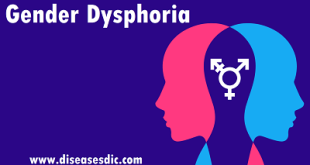What is Giant Cell Arteritis?
Giant cell arteritis also called temporal arteritis or cranial arteritis is a disorder in which the lining of the large blood vessels in your head, and sometimes other parts of the body, become inflamed, which can narrow or completely block the affected arteries, compromising blood flow. Giant cell arteritis is so named because when you look at biopsies of inflamed temporal arteries (those on the side of your head in front of your ears) under a microscope, you can see large or “giant” cells.
GCA occurs in older adults, usually in people over the age of 50. It’s most common between the ages of 70 and 80 (74 is the average age of onset, according to the Vasculitis Foundation). GCA is more common in women than in men (though some research indicates men are more likely to experience serious eye involvement).
The more you know about giant cell arteritis including recognizing its symptoms and understanding how it is treated the better position you’ll be in to get prompt medical help and manage your condition.
Epidemiology
GCA almost exclusively develops in persons older than 50 years. GCA is the most common systemic vasculitis in Western countries. The highest incidence rates are described in Scandinavian countries and North American populations of the same descent. GCA is more common among women than men. In the past few years, a progressive increase in the incidence has been reported.
Risk factors
Although the exact cause of giant cell arteritis is unknown, factors that usually contribute in increasing the risk for developing the condition may include:
Age: Giant cell arteritis usually affects older adults such as in 70 years of age. Giant cell arteritis is very rare in individuals younger than 50 years of age.
Sex: Women are two times more prone to giant cell arteritis when compared to men.
Northern European (Especially Scandinavian Descent): Giant cell arteritis is very common among people in Northern European countries. Individuals of Scandinavian origin specifically get affected with giant cell arteritis.
Polymyalgia Rheumatica: Patients suffering with polymyalgia rheumatica have aching and stiffness in the shoulders, hips and neck. Approximately 15 percent of individuals suffering with polymyalgia rheumatica also suffer with giant cell arteritis.
Causes of Giant Cell Arteritis
GCA affects the temporal arteries and it can develop in the thoracic artery, too. There is one temporal artery on each side of the head. Each one runs over the part of the skull that is above and around the ear. The two arteries themselves run up in front of the ear. They branch off from the two main blood supplies to the head from the heart.
- The exact cause of GCA is unknown, but it is thought to be an auto-immune condition, in which the body’s immune system attacks healthy cells in the arteries. This leads to inflammation.
- When the blood vessel lining becomes inflamed, giant cell lesions can form.
- These giant cells form when numerous immune cells fuse together. These immune cells are a type of white blood cell.
- Giant cells also play a role in tuberculosis (TB), leprosy, some fungal infections, and other conditions.
Symptoms
Symptoms include headaches and blurred or double vision, which is the result of inflammation causing the lining of affected arteries to swell to such a degree that blood flow is reduced or blocked. The condition usually begins with mild flu-like symptoms including mild fever and a persistent dull headache. Specific signs and symptoms will depend on which arteries are involved. These may include:
- Jaw pain – particularly when chewing
- Hearing problems
- Vision problems eg: blurred or double vision, loss of visual field
- Aching muscles about the neck and shoulders
- Loss of appetite
- Fatigue
- Depression
Other symptoms can include tenderness of the scalp, cough, throat pain, tongue pain, and weight loss. There may also be visible swelling of the arteries on the side of the forehead. Symptoms may be vague at first, with a feeling of being generally unwell. Some patients have many symptoms; others have only a few. Symptoms tend to worsen as the condition progresses.
Giant Cell Arteritis Complications
Giant cell arteritis can cause serious complications, including:
Blindness: Diminished blood flow to your eyes can cause sudden, painless vision loss in one or, rarely, both eyes. Loss of vision is usually permanent.
Aortic aneurysm: An aneurysm is a bulge that forms in a weakened blood vessel, usually in the large artery that runs down the center of your chest and abdomen (aorta). An aortic aneurysm might burst, causing life-threatening internal bleeding. Because this complication can occur even years after the diagnosis of giant cell arteritis, your doctor might monitor your aorta with annual chest X-rays or other imaging tests, such as ultrasound and CT.
Stroke: This is an uncommon complication of giant cell arteritis.
Diagnosis and test
GCA can lead to vision loss early on, so it is essential that patients with suspected disease be evaluated promptly. Your doctor will consider a number of factors, including symptoms, medical history, physical exam findings, and results of blood tests and imaging studies. A biopsy of the arteries in one or both temples is usually obtained to confirm the diagnosis. If GCA is suspected, your doctor may begin steroid treatment even before the diagnosis is confirmed, to prevent complications such as vision loss.
Physical exam: Your doctor will check for tenderness, swelling, or decreased pulse in the temporal arteries on either side of the head, as well as tenderness in the temples or scalp. Also, decreased pulses in the arms or legs or discrepancy in blood pressure between any of the four extremities could suggest GCA.
Blood tests: The two main tests for GCA include the erythrocyte sedimentation rate (ESR), commonly called the “sed rate,” and the C-reactive protein test (CRP), both of which can detect inflammation. However, these tests are not conclusive on their own.
Imaging studies: For detailed images of the blood vessels, your doctor may order a magnetic resonance angiogram (MRA), which combines the use of magnetic resonance imaging (MRI) with contrast material; an ultrasound; or a PET scan, which uses a special dye injected into the arm to enhance detail in the images of your blood vessels.
Biopsy: The gold standard to confirm the diagnosis of GCA is biopsy of the temporal artery. A segment of the artery is surgically removed, and then examined under a microscope. In most cases of GCA, there will be evidence of inflammation that includes abnormally large cells called giant cells which give the disease its name. However, in some individuals the biopsy may be negative or normal, even though the disease is present.
Treatment of Giant Cell Arteritis
Treatment focuses on controlling inflammation and preventing complications. This will develop a plan for you that may include the following:
- Initially, you will likely be given high doses of prednisone. The steroid dose typically is tapered over several months based on your response.
- Your rheumatologist may also recommend the drug Actemra (tocilizumab), which was recently approved by the Food and Drug Administration. It is given as a subcutaneous injection at Immunotherapy Infusion Service centres..
- You may also be placed on a low-dose aspirin regimen to prevent heart attack or stroke.
- You will also undergo a baseline bone density analysis to rule out osteoporosis, or bone fragility. Extended use of prednisone increases your risk of osteoporosis.
- You will need regular checkups with your doctor to monitor medication side effects and overall health.
- You may need yearly imaging tests to check on the aorta or other large blood vessels.
Side effects of prednisolone
About one in 20 people who take prednisolone will experience changes in their mental state when they take the medication. For example, you may feel very depressed and suicidal, very anxious or very confused. Some people also experience hallucinations (feeling, seeing or hearing things that are not there). Contact your doctor as soon as possible if you experience changes to your mental state.
Other side effects of prednisolone include:
- Increased appetite that often leads to weight gain
- Increased blood pressure
- Mood changes, such as becoming aggressive or irritable with people
- Weakening of the bones (osteoporosis)
- Stomach ulcers
- Increased risk of infection – particularly to the virus that causes chickenpox and shingles (varicella-zoster virus).
Seek immediate medical advice if you think that you have been exposed to the varicella-zoster virus or if a member of your household develops chickenpox or shingles.
The risk of these side effects should improve as your dosage of prednisolone is decreased.
Giant Cell Arteritis Prevention
Prompt treatment is essential to prevent permanent vision loss and damage to other tissues. The increasing age, the condition and the treatment can increase the risk of certain conditions like muscle weakness, osteoporosis, blood pressure, and weakened immune system.
 Diseases Treatments Dictionary This is complete solution to read all diseases treatments Which covers Prevention, Causes, Symptoms, Medical Terms, Drugs, Prescription, Natural Remedies with cures and Treatments. Most of the common diseases were listed in names, split with categories.
Diseases Treatments Dictionary This is complete solution to read all diseases treatments Which covers Prevention, Causes, Symptoms, Medical Terms, Drugs, Prescription, Natural Remedies with cures and Treatments. Most of the common diseases were listed in names, split with categories.







